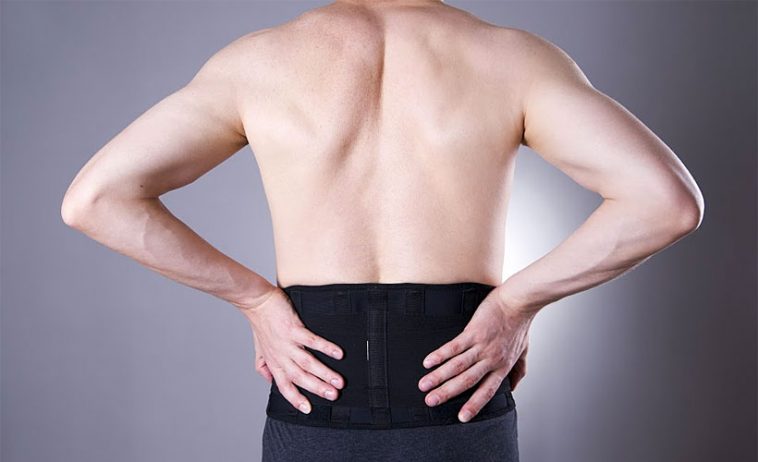- Like
- SHARE
- Digg
- Del
- Tumblr
- VKontakte
- Flattr
- Buffer
- Love This
- Save
- Odnoklassniki
- Meneame
- Blogger
- Amazon
- Yahoo Mail
- Gmail
- AOL
- Newsvine
- HackerNews
- Evernote
- MySpace
- Mail.ru
- Viadeo
- Line
- Comments
- Yummly
- SMS
- Viber
- Telegram
- JOIN
- Skype
- Facebook Messenger
- Kakao
- LiveJournal
- Yammer
- Edgar
- Fintel
- Mix
- Instapaper
- Copy Link
Introduction
People of every demographic experience back-related pain symptoms. In fact, back-related injuries take a major toll on people both at home and on the job.
With so many ways to hurt your back, there’s a high probability that you’ll experience back problems sooner or later.
Unfortunately for some people, back-related pain is inevitable. However, some cause pain based on their everyday activities and habits.
By understanding the different causes of back pain, it’s easier to find relief. Here’s a list of causes and how to prevent further back issues and pain.
What Causes Back-Related Pain?
Did you know your posture, or the way you position your body as you stand or sit down, plays a large role in back aches?
When you regularly sit or walk with your shoulders arched, you’re highly likely to develop back problems over time. This is especially true for people who work at desks and constantly hunch over their computers.
In addition to posture, there are many common movements that contribute to back aches.
Problematic movements for your back include:
- Long periods of awkward bending
- Overextending during stretching
- Intense sneezing or coughing
- Carrying or lifting heavy items
- Driving for a while without breaks
- Sleeping on a mattress without proper back or spine support
Oftentimes, you don’t realize these behaviors are problematic until your pain symptoms arise. In some cases, your back-related pain symptoms aren’t brought on by your actions. For instance, you may begin experiencing back problems due to old age.
As you age, you lose cartilage and water between your discs. This causes the discs to narrow as pressure on your joints increases, resulting in pain. The additional pressure also causes severe neck pain. Getting older also makes you vulnerable to degenerative disc disorder. The discs tear and cause your bones to rub together.
If you have a spine infection, you’re at higher risk of experiencing back discomfort. In addition to pain, typical symptoms of a spine infection include fever and warm areas on your back. You can also experience pain due to spinal cancer. The pain is caused by tumors on your spine pressing against a nerve.
Arthritis, also known as osteoarthritis, is another cause of pain. The inflammation puts additional pressure on your nerves.
Common Risk Factors of Back Pain
Of course, age puts you at higher risk of developing back problems. If you’re younger, there’s many factors that make you vulnerable to experiencing pain. For instance, if you’re overweight, you’re more likely to experience back issues. The excess pounds not only forces your pelvis forward, but they also strain your back muscles and ligaments.
Whether you’re overweight or not, you can also get back-related pain due to lack of exercise. Disuse syndrome, or being sedentary for long periods of time, is responsible for a number of people’s chronic back-related pain. In addition to pain, disuse syndrome leads to the deterioration of numerous bodily functions.
Lack of sleep is another major cause of back-related pain. When you’re unable to sleep well, your motor skills are impacted. This can lead to an auto accident, which can also cause back pain.
If you’re pregnant, you’re also a candidate for back-related pain. This occurs because your hormones change, causing your spine to loosen. Due to less support and a changed center of gravity, you’re likely to experience pain. The additional weight your body also has to carry as your baby grows causes pain.
If you smoke, you oftentimes develop a cough, which over time causes herniated disks. You also experience less blood flow to your spine, which leads to osteoporosis.
Finding Relief from Back-Related Pain
With many different causes of back pain comes with many different forms of relief. For example, an easy way to relieve back-related pain is to change your sleeping position.
The best sleeping positions for your back include:
- Laying flat on your back
- Putting a rolled pillow or towel in the flat of your back
- Neutralizing your spine by placing a pillow under your knees
If you’re pregnant, it’s best to sleep on your left side, on your back, or on your stomach until it gets uncomfortable.
In addition to changing your sleeping position, it’s a good idea to quit smoking. Since the amount of cigarettes you smoke everyday makes you more vulnerable, eliminating them from your daily routine should provide relief. You should also maintain a healthy body weight and lightly exercise and stretch regularly.
The Takeaway
Back-related pain can ruin your day. By changing a lot of unhealthy habits, you can achieve a better quality of life without back problems or pain. If you’re experiencing severe back pain symptoms, speak to your healthcare provider immediately.


